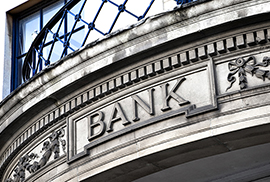Commissioned by The Rockefeller Foundation, Risk Control has completed two substantial new studies of the finances of two World Bank Group lending organisations, the International Bank for Reconstruction and Development (IBRD) and the International Development Association (IDA).
- Ratings and Capital Constraints on IBRD and IDA identifies significant headroom that could be unlocked through reform of the world’s largest development-focused institutions. This would enable increased spending on prosperity and climate resilience. The report sets out how recommended reforms could, in current market conditions, unlock up to $162 billion for IBRD, without affecting its AAA credit rating. The scope identified for additional lending by IDA is smaller at $21-27 billion but still significant.
- Implications of the CAF Panel Report for IBRD and IDA builds on and interprets, in a non-technical way, the findings of the first study and discusses strategy options open to IBRD and IDA to boost lending by implementing the recommendations of the 2022 G20 Independent Review of MDBs’ Capital Adequacy Frameworks (CAF).
Key findings of the two studies are:
- Credit ratings-based lending headroom
Risk Control replicated the annual rating assessments of the three global CRAs for IBRD and IDA. The study found that IBRD could increase non-concessional lending by a cumulative amount of $162 billion – 71% of net outstanding loans – before a credit downgrade by one of the three CRAs is triggered. IBRD would naturally wish to lend less than the amount required to generate a downgrade, but this would still permit a substantial expansion in its loan book. IDA, with its substantial capital base, faces no realistic possibility of a downgrade from AAA if it expands its debt issuance. The key constraint to IDA growth, however, is not its capital adequacy but rather the availability of concessionary capital from donors. - Economic Capital (EC)-based lending headroom
Like all major MDBs, IBRD and IDA have implemented internal capital adequacy frameworks that evaluate risk and determine appropriate operating policies. In this context, MDBs typically set a Capital Adequacy Ratio (CAR) equal to Capital Resources divided by Economic Capital. Risk Control found even under conservative assumptions, the CAR for IBRD and IDA is much less constraining than obtaining a triple-A rating from the global ratings agencies. This means there is significant fiscal space within the existing frameworks. Risk Control concluded that IBRD could increase lending by $393 billion without jeopardizing its capital resources. IDA is even further from a CAR constraint although the sustainable concessional lending constraint limits scope to exploit this headroom. In evaluating IDA’s CAR constraint full allowance was made for the concessional nature of the loan book. - Callable capital uplift
The G20 expert report recommended that Multilateral Development Banks recognize the financial value of ‘callable capital’, an international treaty commitment by government shareholders to supply additional resources if an MDB faces severe financial problems. Capital pledged by member governments, many of which have high credit ratings, increases the resilience of MDBs substantially. Risk Control found that if callable capital of AAA-rated shareholders were incorporated into capital adequacy calculations, IBRD could further increase lending from $393 billion (based on Economic Capital above) to $894 billion. Growth on such a scale would clearly require that global ratings agencies modify the allowance they make for callable capital in their evaluations of MDBs. - Innovations to strengthen lending headroom
The CAF study also recommends that MDBs adopt innovations to optimize their balance sheets and permit greater lending. Many of these innovations are already in use in the private sector. Such innovations could include the use of hybrid capital, securitization for risk transfer, and shareholder guarantees. The impact of hybrid capital and securitisation of MDB loan portfolios is particularly noteworthy.- Hybrid capital could boost lending capacity substantially, especially if it were provided by holders of IMF Special Drawing Rights (SDRs) as recently proposed by the African Development Bank and Inter-American Development Bank.
- Risk Control results show that IBRD and IDA could achieve meaningful reductions in their capital needs as measured by improvements in S&P’s Risk-Adjusted Capital ratio. Securitisation of 10% of their portfolios of sovereign loans could, by this measure, generate additional lending headroom of $6-13 billion for IBRD and $23-28 billion for IDA. The gain is greater for IDA because it lends to lower rated countries. Securitization would likewise reduce required capital as measured by EC.
- Risk transfers, including securitisation, can relax lending constraints that IBRD and IDA face. Tapping the full potential of risk transfer transactions would require some changes in rating agency methodologies.
- Balance sheet optimisation across the two institutions
The fact that the two institutions face differing constraints implies that lending constraints on IBRD could potentially be substantially relaxed if the balance sheets were combined or if risk capacity were shared through cross-booking of loans or internal risk transfers.
The studies were commissioned by The Rockefeller Foundation.
Reuters article about the Risk Control studies: “Reforms could boost World Bank lending to developing countries by nearly $190 bln”


